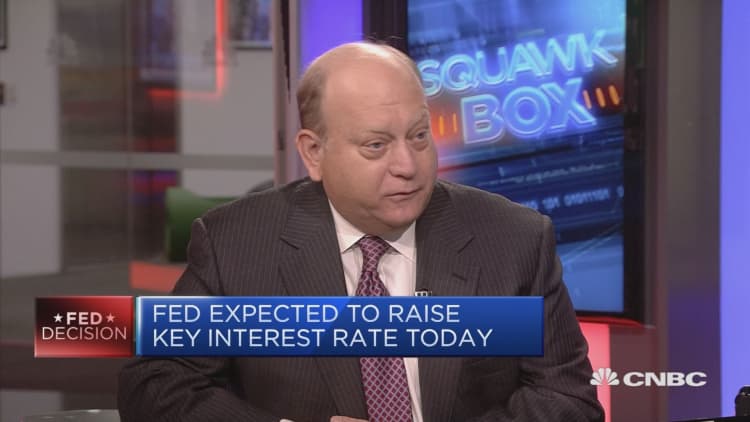
The staggering level of government debt carrying negative yields, after falling from its peak a year ago, is back on the rise.
A slew of factors converged in May to send the global total to $9.5 trillion of sovereign debt — a situation where governments effectively are getting paid to borrow money, according to Fitch Ratings. The total represented a 10.5 percent increase from April.
Prominent investors have warned of the dangers of so much negative-yielding debt. Janus Henderson's Bill Gross has called it a "supernova" that will "explode," while Deutsche Bank CEO John Cryan has cautioned about "fatal consequences" of central banks being enticed by slashing rates to that extent.
The level spiked last year as global central banks enacted ultra-easy monetary policies in an effort to spur growth. Fitch said the French election, in which mainstream candidate Emmanuel Macron won against right-wing maverick Marine Le Pen, and the decline in the U.S. dollar helped pull rates back down.
"Higher yields have alleviated some pressure for investors, but challenges remain as yields in many developed economies are still near historic lows," said Jonathan Boise, Fitch's associate director for macro credit research.
The rise in negative yields comes even as the Federal Reserve has been hiking rates and other central banks globally have been talking about modest tightening in policy.
Multiple issuers across Europe and Asia have bonds that carry negative yields.
Switzerland's 10-year note was yielding -0.124 percent Friday, while Japan's two-year was at -0.119 percent. The U.S. has no negative-yielding debt.
Buyers of bonds with yields below zero are generally central banks trying to promote growth and pension funds and other institutions looking to balance risk. Retail investors are not part of that group.


